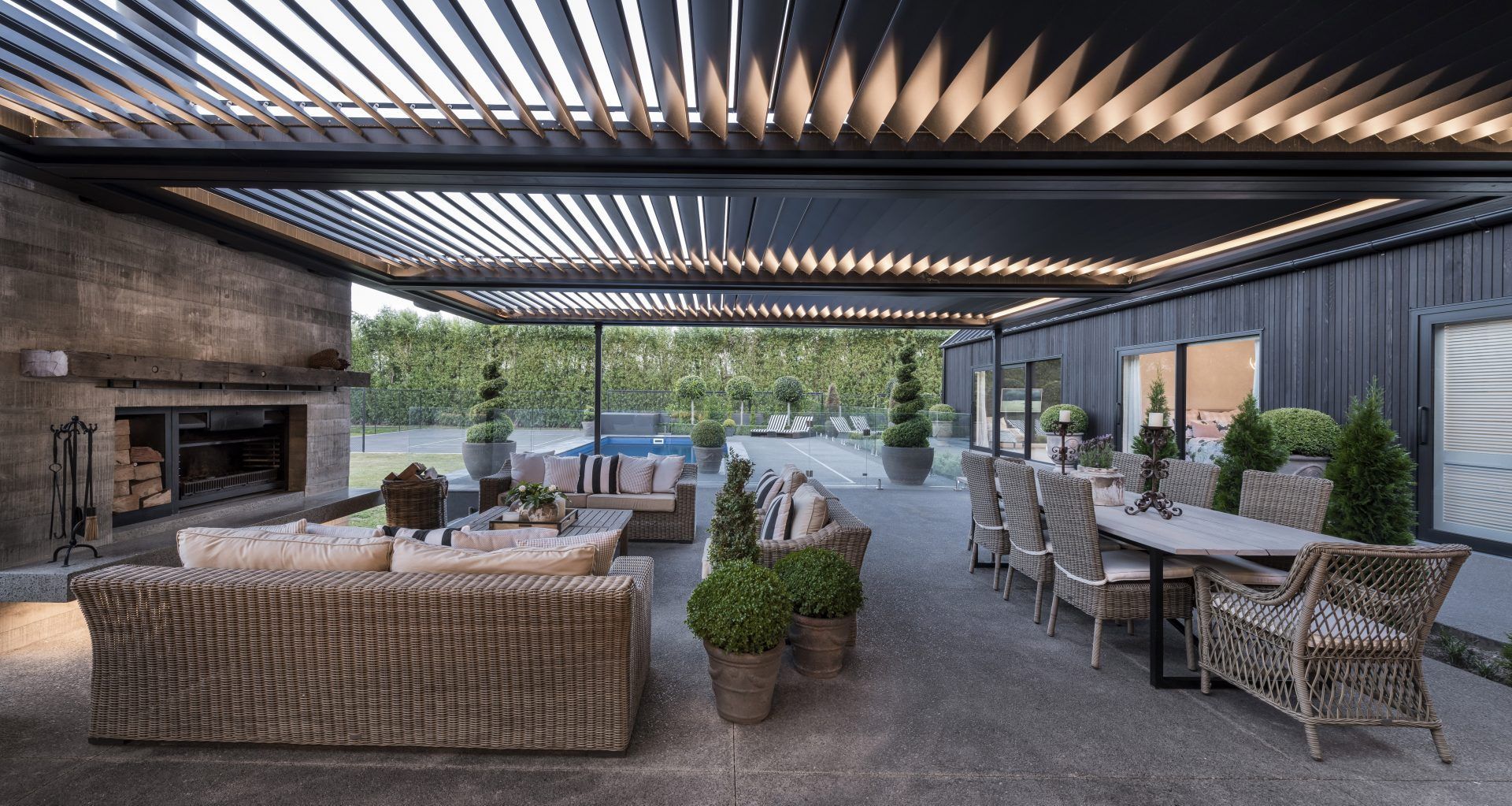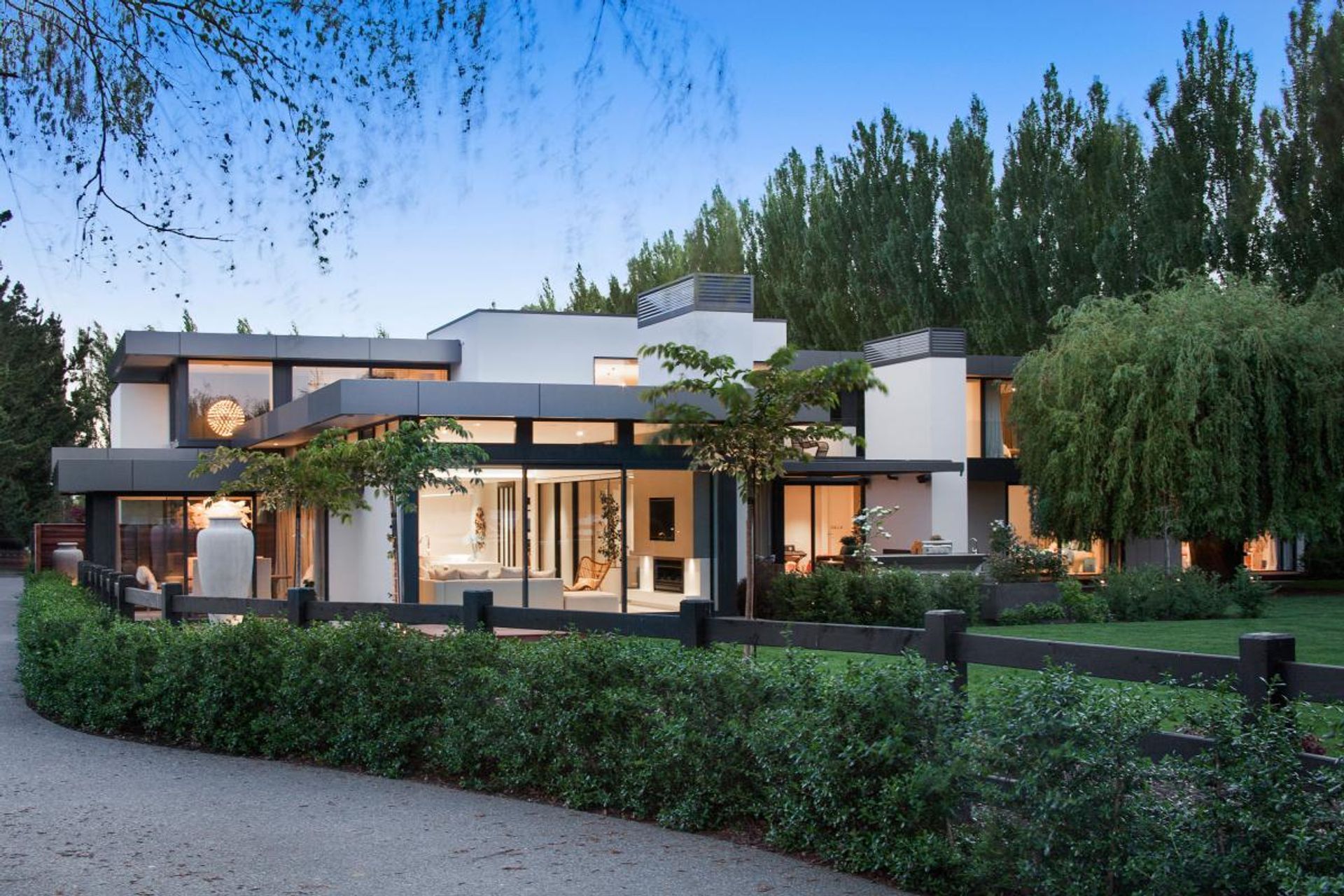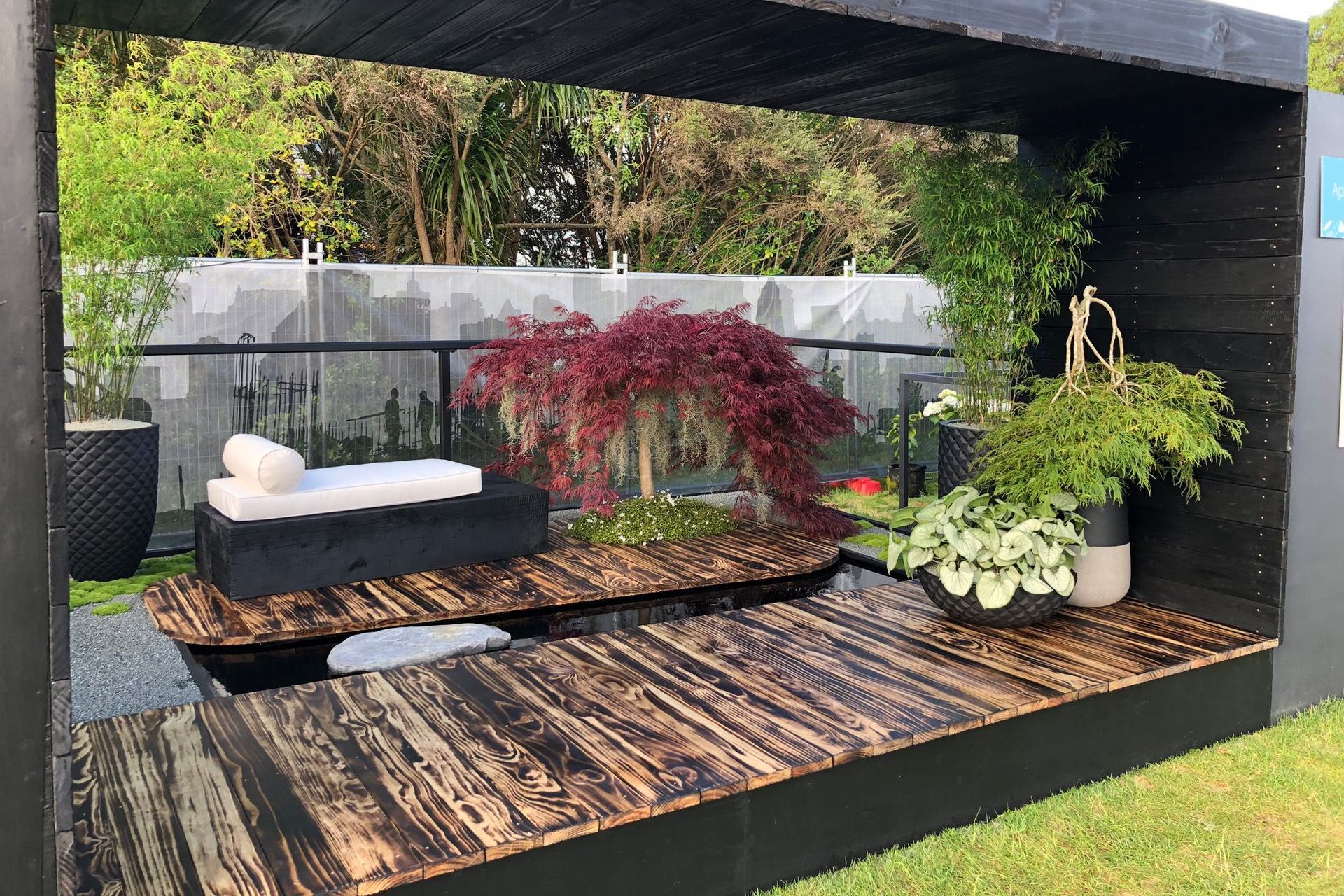Expert advice to create the best outdoor living spaces

How can good landscaping enhance the home for outdoor living? We sought advice from three talented landscape architects, Danielle Dore from OuterSpace, Matt McIsaac from Industry Landscapes and Henry Blakely from Henry Blakely Landscapes.
1. Planning is crucial
Matt: It’s important to tie the landscape in with the architecture, especially the style of the house – the lines, materials, colour tones and textures. You wouldn’t build a house without a plan and it’s the same with a garden, you need a masterplan you can work with, even if you stage its development and construction over time, depending on your budget. It’s a really good idea to turn to professionals for advice.
Henry: Living life outdoors is just as important as life inside so getting the landscape architect, architect, builder and interior designer all working together at the early concept style really helps to resolve ideas and to create seamless integration between the landscape construction and the house build. It also ensures that there aren’t issues later down the line and means you can accurately forecast on costs, allocate a budget and set that aside, so that the overall landscape design does not become compromised if there is a cost overruns towards the end of the build.
2. Work with the architecture of the home
Henry: The landscaping not only adds aesthetic value to the home but it works in conjunction with the architecture of the house. It becomes an extension of the house and how it’s grounded in its surroundings. As landscape architects, we aim to subtly enhance the architectural elements of the house. We look at any distinguishing features that can be reflected in the landscape, for example, the angles of the roofline and forms and shapes within the architecture.
A strong relationship between the architecture and landscape also helps with the flow of both. Even with the landscaping, you need to think about the interior palette – the flooring, curtains, wall colours and how that integrates with the outside. What is the art collection like – does it contain bright or muted colours? Get a handle on the styling, rather than going off on a tangent – is it a calm environment that’s needs to be reflected in the landscape?

3. Build indoor-outdoor connections
Matt: The landscape is an extension of your living – it doesn’t only revolve around outdoor living but it creates connections to the living area inside the house, better known as indoor/outdoor flow. It’s all a matter of cohesion so keep your plant palette to a minimal variety of plants, use green as your base and other coloured plants that work with the colour of the house, so it all translates beautifully. Use outdoor feature pots in the same style for inside plants, but just smaller in size.
Danielle: It is all about ensuring your home is nestled within the landscape so that architecture and landscape work as one to create a seamless, smooth transition between indoors and outdoors. Using materials that are inside
and replicating them out into the landscape helps to add repetition and joins elements to enhance continuity within your home. From using the same cladding from the doors on the house on the gates to using the same schist from an indoor wall on an outdoor fireplace. This will draw the eye between the elements and is an essential part of achieving indoor-outdoor connections.
Good indoor-outdoor flow creates movement and can add another room to your home which can make the house seems a lot bigger than it really is. Bringing the outdoor living area up level with the finished floor of your home creates a seamless flow and gives the feeling that your outdoor living area is an extension of your home.
4. Make good use of all of the landscape
Matt: An outdoor room doesn’t necessarily need to be directly connected to the living space. It can be interesting to create destinations within the landscape away from the patio area, where you make good use of the land, such as another outdoor seating area to sit and have a glass of wine, with a water feature or something that draws you into the landscape. It’s also a good idea to set spa pools away from the house, nestled within tropical planting, to create a whole different feel from the house and you can enjoy the surroundings on the way.”
5. Plant strategically to create privacy and looking to the future
Matt: Strategic planting is useful to create privacy by screening or blocking out neighbours, or to create a focal point. A row of palms works well to create an inner-city courtyard. I recommend Kentia palms, which are fast growing and low maintenance.
Danielle: Think ahead with planting. Ensuring plants, especially trees, are in the right place for root growth and think about what they will look like in 10, 20 or 30 year’s time, as well as positioning planting to help protect
your outdoor living areas from the prevailing winds. Take into consideration the different aspects of your home, plants that love the sun will not do well on the south side of your home, so make sure you choose the specific plant for the location.
6. Create a simple plant palette
Matt: Plant en mass with just a handful of species creates a simple but bold landscape. Choose the right plant varieties for the environmental conditions. Avoid strange mixtures of plants and no strong theme, so find someone enthusiastic at the plant centre. There is currently a huge trend for indoor plants right now, but you can’t place them just anywhere – they like low, conservatory-style light, so, again, seek expert guidance.
7. Think about the landscape from the inside out
Henry: The architecture and landscaping should work in conjunction with each other. You have to think in terms of living in the house and how does the landscape work from the inside, both functionally and aesthetically. What are the critical views of the exterior? Are you trying to highlight these views or create softer negative spaces? Lighting, sculpture and key planting can be used to achieve this balance.
Danielle: You can also position focal points in the landscape on key axis from inside your home to gives the house depth. External garden sculptures, water features, special pots or a feature tree can help achieve this.
8. Carefully consider the wind and ground conditions
Danielle: “Here in Canterbury, the easterly is a killer, so you need to think carefully about your site and where the house sits on the site. From there, you can consider the types of plants and materials to suit prevailing
winds, so you can use outdoor spaces all year around. Ground conditions vary depending on the location, from heavy clay loam to a light sandy loam, so it is important to choose the right plants for the location”
Henry: Creating beautiful landscapes post-earthquake in Christchurch has presented other challenges such as liquefaction, engineered building platforms and changing water tables. For example, established trees suddenly turned up their toes over the last 2 to 3 years because the liquefaction had affected their root structures. In some areas of Canterbury, the water table is now higher or lower and what worked previously might not work now.
9. Creating an entertainers’ paradise
Danielle: It is important that the architecture and landscape of your home work together. During the past decade, outdoor rooms and kitchens have become very popular, probably because people work hard and want to relax and enjoy themselves. Plus, there are so many products, such as outdoor heaters and fireplaces, out there now to help extend our summer into the cooler months.
With the shift to outdoor living, swimming pools are coming into its own as a central feature of modern landscaping and garden design. Aside from the enjoyment, they provide for you and your family, when they are professionally designed a landscaped pool is one of the best ways to add value to your home. We have found people are now opting for darker-coloured patio areas around all-white pools – but it’s really a personal preference.
Another trend we are seeing is customised water features that are multi-use and with sensory elements, so the lower walls become informal seating. It sounds strange but it’s important to create the right water noise and movement. Think about the location a water feature is located because curtain-style water features can catch the wind.
10. Love your life outdoors
As Kiwis, we tend to spend a lot of time being outdoors and we want to encourage that. Outdoor living has taken on a new meaning as people want to have a dedicated dining setting, including an outdoor kitchen, delightfully textured landscapes, and comfortable, high-quality lounging areas to enhance their living.
Although our weather isn’t the greatest all year round, by creating covered outdoor rooms with louvres, radiant heating and a fireplace as a focal point, you can extend your outdoor entertaining either side of the summer months.
It is important that your landscape suits your needs and is designed around how you live your lives to ensure your zones are functional, as well as inspirational. In New Zealand, we work hard so we need a special space for relaxing with family and friends.
Top banner image: Henry Blakely Landscapes designed the landscaping at Ohoka House in Canterbury.


